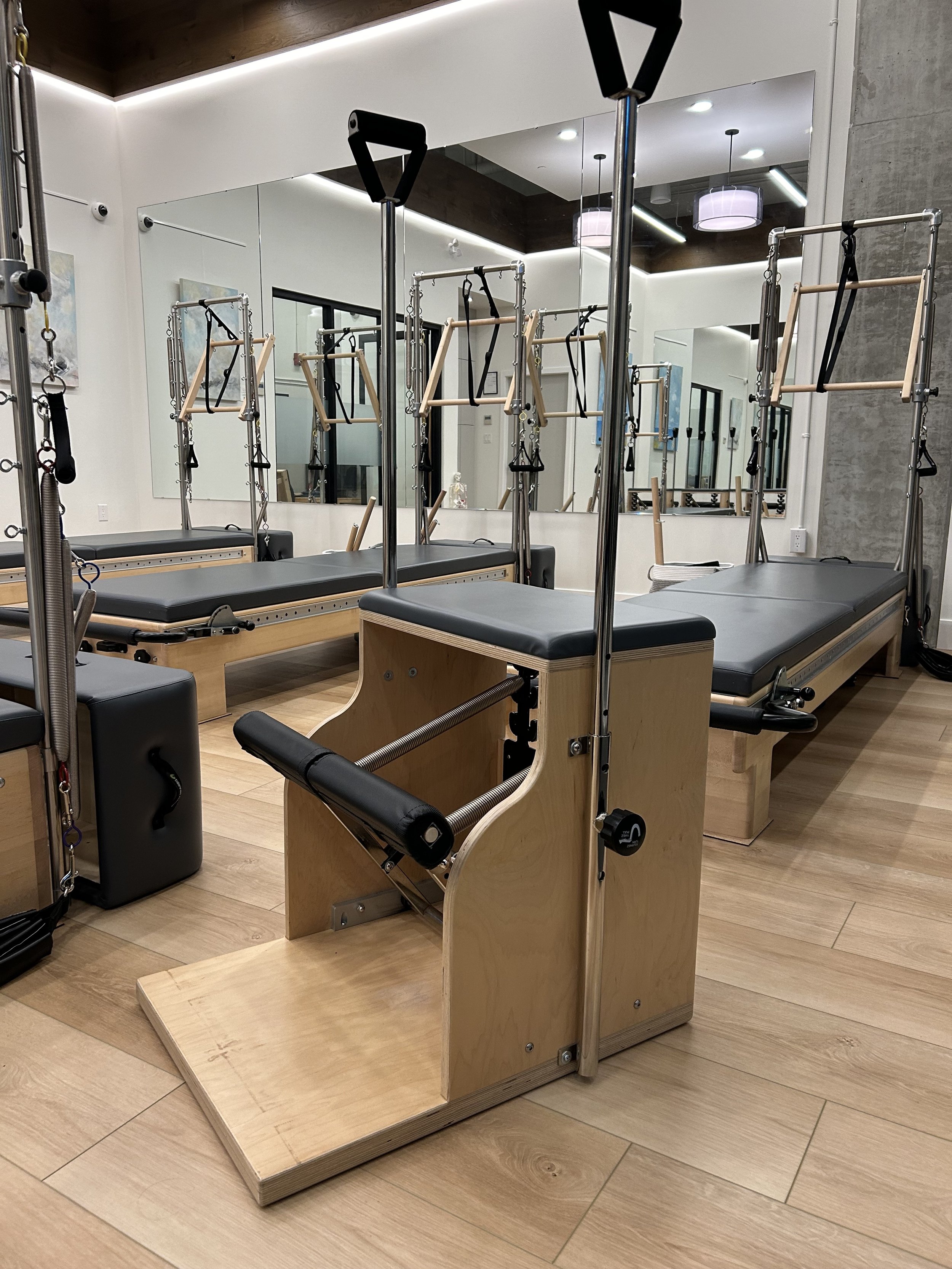The Wunda Chair
This Fall I have been writing a series of articles exploring each piece of Pilates equipment (aka apparatus) with the history and benefits of each. We explored the Universal Reformer and Trapeze Table/Tower thus far, and now onto the Wunda Chair.
Before starting this series I wrote about the history of Pilates and why it’s recommended by health professionals to add Pilates workouts to your current exercise routine. If you missed reading that article, you can read it on my blog.
Wunda Chair History
Joseph Pilates created the Wunda Chair for his clients to work out on at home so they can practice their Pilates exercises even on days they couldn’t make it to the studio.
He designed the chair to be a living room armchair doubled as a versatile exercise machine (Alpers et al., 2002). He patented the Wunda Chair in the 1930s, it’s super interesting to read the original patent listed below (Rhinebeck Pilates, n.d.). The Wunda chair was redesigned several times by Joseph Pilates after the original patented 1930s version (Alpers et al., 2002).
Joseph created approximately 50 exercises for the chair, focusing on core strength, leg strength, shoulder girdle stability and mobility (Alpers et al., 2002).
(Rhinebeck Pilates, n.d.)
(Rhinebeck Pilates, n.d.)
Wunda Chair Elements
While performing chair exercises we can sit, kneel, lie, stand on, stand in front of, stand behind of, face toward or away from the chair - we can even face sideways!
The chair’s unique and versatile design enables everyone to get amazing results - from an injured client needing to strengthen their hip, knee, or foot, to the most advanced student building strength and endurance by doing pushups, backbends, and handstands on the chair (Alpers et al., 2002).
It is a simple piece of apparatus consisting of a seat, a hinged pedal with springs attached, a wooden base with a “cactus” where the springs hook onto, along with two supportive handles.
Padded Seat
We stand, kneel, lie on, and sit on the chair seat to perform exercises that strengthen our arms, legs, abdominals, and spinal erectors.
Pedal (also called Paddle)
We push the pedal down with our hands or feet to open the springs to either build strength or have more support, depending on the exercise.
Handles
Not all chairs on the market have handles, but I do find it’s an important element to have on the Wunda chair to provide safety and support. Our chair handles are removable for more versatility.
Springs & Cactus
Our main studio chairs have two heavy springs and two light springs, along with four options on the cactus.
Wunda Chair Benefits
The Wunda chair is particularly effective when working with asymmetrical issues within the body, such as a knee injury or scoliosis (Alpers et al., 2002). Because of the handle and spring support, the chair is especially helpful in rehabilitating weaker backs, as well as, hip, knee and ankles (Alpers et al., 2002).
The chair is one of the most challenging pieces of Pilates equipment, but even beginners can benefit from the foundational exercises to gradually build leg strength, arm and shoulder girdle strength and stability, as well as, challenging the core. Perfect for skiers, runners, tennis players, golfers, and for those who want to increase power in their upper body for throwing, lifting, and racquet sports (Nora St. John, 2019).
The whole Pilates Method is connected. The exercises we do on the Reformer are enhanced on the Wunda Chair, which we can feel from another angle on the Trapeze Table/Tower. All pieces of Pilates apparatus help us dig deeper into the Work of Pilates in an uniquely beneficial way. When we practice Pilates on all pieces of apparatus we have the opportunity to build more muscular balance to do all the things we want to do in our daily lives with ease, strength, and vitality.
“Wundebar” means wonderful in German, and I think we can all agree the Wunda Chair is indeed mightily wonderful!
Resources
Alpers, A. T., Segel, R. T., & Gentry, L. (2002). The everything Pilates book: The ultimate guide to making your body stronger, leaner and healthier. Adams Media.
Grootenhuis, R. (2019, May 29). The History of the Pilates Cadillac. Pilates Anytime. https://www.pilatesintel.com/2019/05/history-of-pilates-cadillac-reiner-grootenhuis/
Nora St. John. (2019). Chair: Pilates Instructors Training Manual. Balanced Body.
Rhinebeck Pilates. (n.d.). Apparatus History | Pilates History Research. Retrieved November 10, 2024, from https://www.rhinebeckpilates.com/pilates-apparatus-history/#:~:text=Over%20the%20years%20I've,his%20own%20way%2C%20that%20fit







